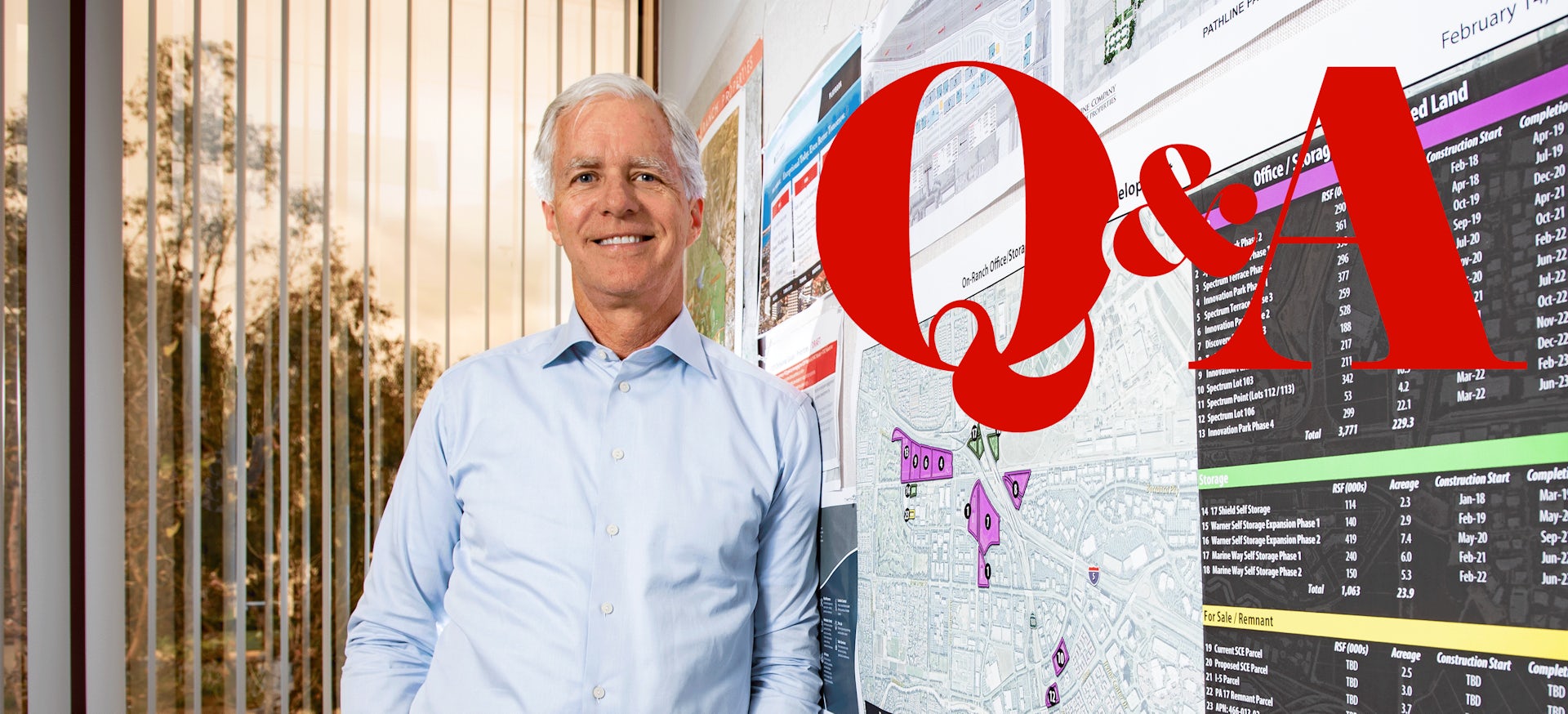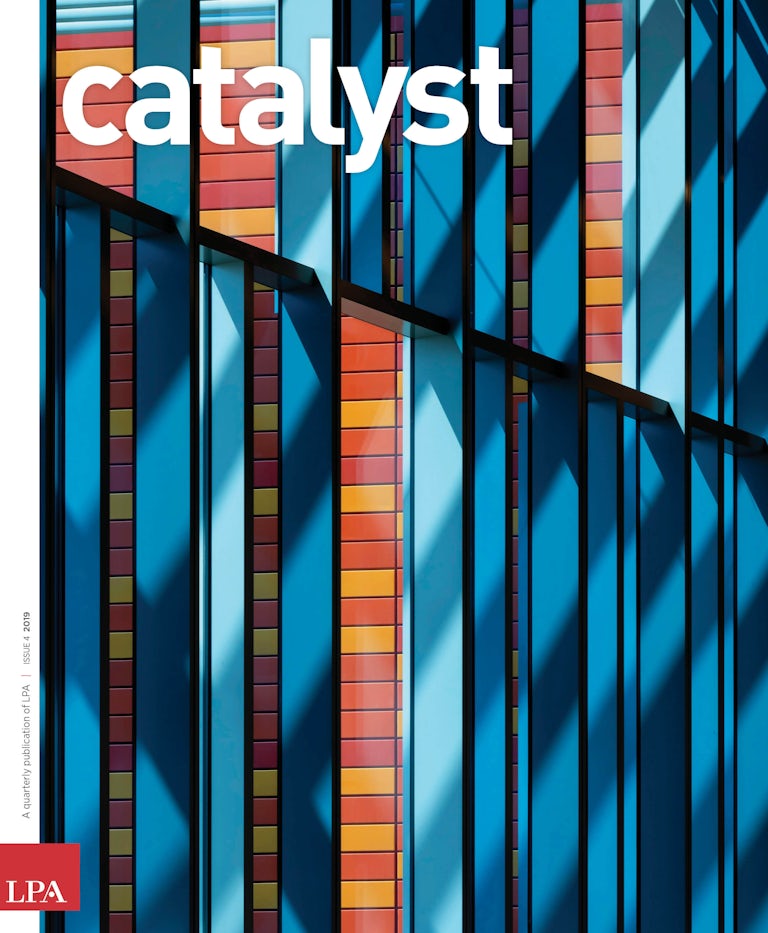As President of Irvine Company Office Properties and Corporate Strategies, Doug Holte oversees a portfolio of 50 million square feet of office and R&D space in California, Chicago and New York. He has helped position the Irvine Company as a leader in workplace design, developing and upgrading office communities that are efficient and responsive to the ever-shifting needs of the workforce.
In a discussion with Catalyst, he explores the changing workplace, the need to better address health and well-being, and the unique role of a “forever owner”—the Irvine Company’s core strategy is to hold property for the long term—in creating communities that stand the test of time.
“It’s really fun to be part of a company that has a forward-planning mentality all the time,” Holte says. “A lot of property owners don’t really get up every Monday morning asking, ‘How can I think ahead?’”
Q&A: Bringing New Energy to the Workplace
Irvine Company’s Doug Holte discusses healthy work environments, the family-friendly workplace and the future of office design.

How are the expectations of the workforce changing?
People want to have a sense of belonging and a sense of getting something done, ideally something important, in the course of a workday. And they want to do it in a place that feels like it has some variety and energy. Those are kind of the cue words that we kept hearing. We’re trying to think more and more about variety and energy, and about the versatility of spaces. And that’s versatility over the course of a year, but also over the course of a decade. Because for us, as a forever owner, we actually have to give some thought to how business enterprises might organize themselves differently in the future.
What do you think is going to be more relevant in the workplace three years from now?
The theme that I think we should organize around would be family-friendly workplace environments. And family-friendly is different than just a kid’s day at work. It’s being friendly in how space is organized and jobs are organized so that people can accommodate different stages of their life, where they need to care for either a child or an elderly member of their family. And that actually affects the way space is organized and how services are delivered.

Anything else?
Digital and physical products for health and wellness. I think we’re going to find ways where the workplace and the employer will make themselves more attractive to the workforce by offering ways to work healthy—and maybe you can even advance your health and well-being during your workweek. I think employers and the landlords haven’t fully figured out how to do that. At the Irvine Company, we launched upgraded or new on-site fitness centers called Kinetic. We promoted it through a digital app to create this merger of digital convenience and physical facilities, organized around a health and wellness movement. It’s more than a “gym.”
What do you think is going to be the key for the future of suburban campuses?
A healthy daily connection to the adjacent outdoor environment. Cities offer energy and variety for early-career professionals; over time mature professionals begin to organize their lives around families and other familiar communal centers, such as schools, clubs and places of worship. Suburban America is going to have an opportunity to reinvent itself into a place that fulfills these communal experiences throughout your entire life cycle. The future that we want to be part of inventing is to have health and wellness-related services and relational experiences that we can efficiently bring to you.

You can’t be a passive landlord anymore?
I don’t think so. The challenge is physical planning and design need to be accompanied by financial planning and design.
I think one of the problems right now is we’re seeing an amenities arms race in all of our markets. Developers and property owners are buying, fixing and selling properties quickly. They’re throwing everything you could ever imagine at the party to make it really cool to attract tenants to pay rent, and then they’re going to sell it to get their money out. In many cases, those amenities won’t be financially sustainable, because property owners have offered too much to the customers and some of those amenities are going to get either canceled or they’re going to operate at a lower quality than people expected.
Any recent feedback from your clients that surprises you?
It’s interesting to see how some communal spaces don’t get the use that our customers thought they would. What I mean by that is, we’ll have, maybe, a lounge with self-service coffee or a game room. Once in a while they get some early energy. But in a lot of the projects, after the initial enthusiasm, they get out of daily rotation. We’re really stepping back and asking, what kinds of communal spaces will people use repeatedly over time?
Day care is one that we’re really wrestling with. The challenge so far has been how to locate and design it so that it is the favorite choice of parents in our properties, versus their day care closer to home. We haven’t figured out yet how to introduce day care in a way that remains consistent with the expectations of a workplace community. The workplace has different priorities than a residential community. Some businesses may love the idea of easy access to their kids, but they’re not looking for the drop-off/pick-up and that type of activity in the midst of their workday.
How does the Irvine Company’s experience in mixed-use development impact your workplace ideas?
One thing that has helped us a lot in the office business is we’ve shifted all of our conversation to think like a retail or resort landlord, from a word-of-mouth standpoint. Office landlords typically don’t really think about word of mouth much. Once an office landlord has you on a five- or 10-year lease contract, most of the time they move on to other activities. They make sure that they fulfill the basic services you expect, but they’re not obsessed with how they can make your workday better.
We’ve tried to shift our whole culture here to think like retail and resort operators who need word of mouth to sustain repeat visits. They need you to tell your friends to go to the restaurant or store or resort. We’ve tried to create a culture that says we want word of mouth where people say, I want to always be an Irvine Company Office customer.
This story originally appeared in Catalyst Issue 4 2019. Subscribe today to receive Catalyst, a quarterly publication that takes a deep dive into design ideas, industry leaders and initiatives.















